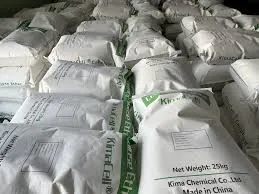
ਸਤੰ. . 16, 2024 14:14 Back to list
Hydroxyethyl Cellulose Solubility - Comprehensive Guide
Hydroxyethyl Cellulose Solubility An Overview
Hydroxyethyl cellulose (HEC) is a water-soluble polymer derived from cellulose, a natural polymer found in the cell walls of plants. It is predominantly used in various industries, including cosmetics, pharmaceuticals, food processing, and construction, due to its unique rheological properties and ability to form viscous solutions. Understanding the solubility of hydroxyethyl cellulose is crucial for optimizing its applications.
Hydroxyethyl Cellulose Solubility An Overview
One of the most significant factors influencing HEC solubility is temperature. HEC typically demonstrates greater solubility in warm water, improving its hydration rate and overall performance in applications. In most cases, HEC is soluble in cold water as well, but the dissolution process can be slower, leading to the formation of lumps or aggregates. Therefore, when incorporating HEC into formulations, it is advisable to mix it with warm water initially to achieve a homogeneous solution quickly.
hydroxyethyl cellulose solubility

The pH of the solution also plays a vital role in the solubility of hydroxyethyl cellulose. HEC is relatively stable across a wide pH range but may show variations in solubility. Generally, neutral to slightly alkaline conditions provide optimal solubility. In acidic conditions (below pH 4), HEC solubility may decrease due to the protonation of functional groups, leading to increased intermolecular hydrogen bonding and reduced availability of active sites for hydration.
Salinity or the presence of electrolytes can also impact the solubility of HEC. High concentrations of salts can lead to ionic strength, which may cause reduced solubility due to the screening effect on intermolecular interactions. This phenomenon is particularly relevant in applications where HEC is used in conjunction with other polymeric substances or in saline environments.
HEC is commonly used in various formulations due to its ability to impart desirable properties such as viscosity, stability, and texture. In cosmetic products, for example, HEC serves as a thickening agent and helps maintain the stability of emulsions. In pharmaceuticals, it can enhance drug delivery by improving the bioavailability of active ingredients. In the food industry, HEC may act as a thickener, stabilizer, or emulsifier, thereby enhancing texture and shelf life.
In conclusion, the solubility of hydroxyethyl cellulose is a critical factor that influences its versatility and effectiveness in numerous applications. Factors such as temperature, pH, and the presence of salts must be carefully managed to achieve optimal solubility and performance. As industries continue to explore new uses for HEC, a comprehensive understanding of its solubility characteristics will remain essential in the development of innovative products. By leveraging its unique properties, HEC will continue to play a vital role in enhancing the quality and functionality of a wide range of formulations.
-
Unlocking the Benefits of HPMC Products: A Gateway to Versatile Applications
NewsAug.07,2025
-
Unleashing the Potential of HPMC Ashland: A Comprehensive Look
NewsAug.07,2025
-
Tile Bonding Cellulose: The Key to Superior Adhesion and Durability
NewsAug.07,2025
-
Hydroxypropyl Methylcellulose Powder: The Versatile Component in Modern Pharmaceuticals
NewsAug.07,2025
-
Hydroxyethyl Cellulose: The Versatile Solution for Various Industries
NewsAug.07,2025
-
Hydroxyethyl Cellulose (HEC): The Versatile Polymer for Various Applications
NewsAug.07,2025







